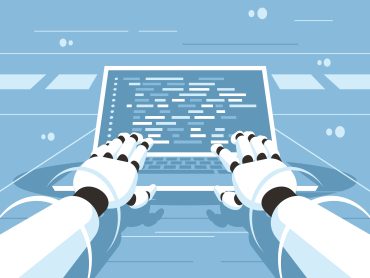

AI code generation tools reshape software development as market surges toward $24 billion amid security challenges
Three Key Facts
- $24.46 billion market size expected by 2025 as vibe coding experiences 24.3% annual growth, with AI-generated code now accounting for 41% of all code produced globally.
- 25% of Y Combinator startups adopt AI for foundational codebases while commercial AI models hallucinate non-existent packages in 5.2% of cases, creating significant security vulnerabilities.
- EU AI Act mandates thorough documentation and auditing for AI-generated code in high-risk sectors, forcing organizations to implement new compliance frameworks for vibe coding practices.
Introduction
Vibe coding transforms software development by enabling developers to generate functional code through natural language prompts to AI systems. This approach, championed by Andrej Karpathy, allows users to describe desired software functions and receive working code from language models instantly.
The method delivers remarkable results across industries. Pieter Levels utilized AI tools to create Fly.Pieter.com, generating $38,000 in revenue within 10 days and attracting 89,000 players by March 2025. However, this rapid development capability introduces critical security vulnerabilities that traditional testing tools frequently miss.
Organizations now face a fundamental challenge: balancing the speed and accessibility of AI-generated code with the security risks inherent in automated development processes.
Key Developments
The vibe coding sector experiences explosive expansion, with AI-generated code representing 41% of all code produced in 2024. Developers wrote 256 billion lines of AI-assisted code, fundamentally changing how software reaches market.
Major AI models including GPT-4, Claude, and Cursor lead adoption across development teams. These tools excel in automating repetitive tasks, guiding developers through new frameworks, and facilitating rapid prototyping for startups and established companies alike.
The practice extends beyond simple automation. Nearly 44% of non-technical founders now use AI coding assistants for their first prototypes, while a quarter of Y Combinator’s Winter 2025 startups maintain codebases that are 95% AI-generated.
This democratization reduces development costs significantly and lowers barriers to entry for entrepreneurs. Solo founders launch products at a fraction of previous development costs, eliminating the need for large technical teams during early stages.
Market Impact
The vibe coding market projects a 24.3% annual growth rate, reaching an estimated $24.46 billion by the end of 2025. This expansion reflects widespread adoption across sectors, from gaming to enterprise software development.
Startups experience accelerated feature development, with founders expanding their products an average of 3.7 times more than initially planned. This rapid scaling capability attracts significant investment in AI-powered development tools and platforms.
However, hidden costs emerge as organizations require multiple AI tool subscriptions and face platform migration expenses when scaling operations. The immediate cost savings often give way to budget overruns as projects mature and require more sophisticated infrastructure.
Commercial viability varies significantly based on implementation approach. Companies deploying tiered access models maintain better cost control while preserving security standards throughout their development cycles.
Strategic Insights
Organizations implement tiered access models to balance speed with security requirements. These frameworks provide supervised environments for experts, guided workflows for less experienced users, and full access only for security-trained engineers.
The approach addresses a critical vulnerability: AI models frequently exclude security essentials unless explicitly prompted. According to The Hacker News, this creates “silent killer” vulnerabilities that pass traditional security tests while remaining exploitable.
Successful implementation requires security-informed prompting techniques, multi-step validation processes, and automated security testing integration. Organizations must treat AI as an augmentation tool rather than a replacement for experienced developers.
The regulatory landscape adds complexity through the EU AI Act, which mandates comprehensive documentation and auditing for AI-generated code in high-risk sectors. Companies must develop new compliance frameworks specifically addressing AI-assisted development processes.
Expert Opinions and Data
Security analysis reveals significant disparities between AI model performance. Commercial models hallucinate non-existent packages in 5.2% of cases, while open-source alternatives reach 21.7% hallucination rates, requiring rigorous validation protocols.
Industry experts emphasize the importance of Security by Design principles in vibe coding implementations. This approach integrates threat modeling, secure authentication systems, and data encryption from the initial development phase rather than as afterthoughts.
Development teams report that AI excels in specific areas while maintaining limitations in logic complexity, scalability planning, and source code access. These constraints become significant bottlenecks as projects transition from prototype to production environments.
Benchmark studies indicate that founders utilizing vibe coding must track their technology stack vigilantly to prevent budget overruns and technical debt accumulation. The ease of rapid feature addition often leads to product bloat without proper architectural oversight.
Conclusion
Vibe coding establishes itself as a transformative force in software development, enabling rapid prototyping and reducing barriers to market entry. The technology’s democratizing effect allows non-technical founders to build functional products while experienced developers accelerate complex project timelines.
Security considerations remain paramount as organizations balance accessibility with risk management. The implementation of tiered access models, security-informed prompting, and comprehensive validation processes becomes essential for sustainable adoption.
The market’s projected growth to $24.46 billion reflects industry confidence in AI-assisted development, despite ongoing challenges with hallucination rates and regulatory compliance requirements that continue shaping implementation strategies across sectors.








